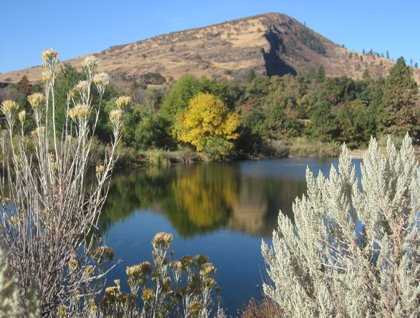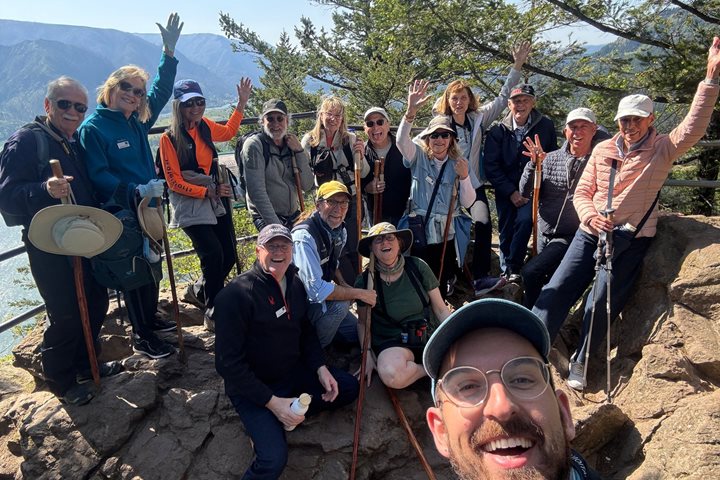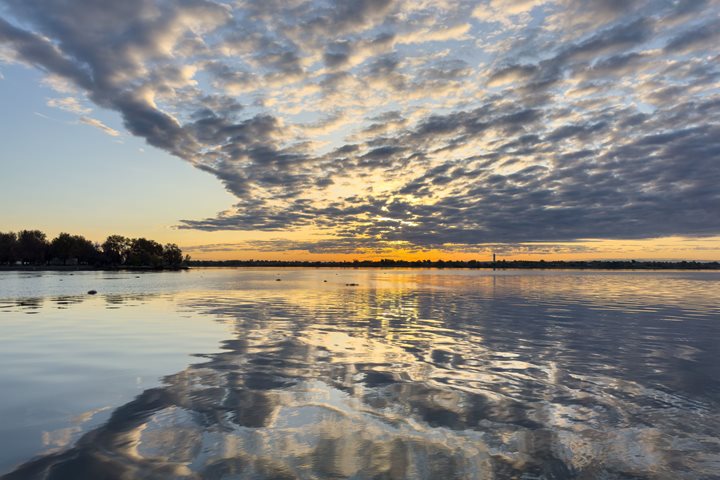We began our day ashore with an early morning drive along Oregon’s Columbia River Scenic Highway, ascending a set of graceful curves ever upward to the heights of Rowena Crest. Stretching far below was the mighty Columbia. To the south was Mount Hood, brilliant in the morning sun with a fresh dusting of autumnal snow, while just visible to the north was the tip-top peak of Mount Adams. This roadway and spectacular vista point were part of the legacy of local visionary entrepreneur Sam Hill.
Much of our morning was devoted to exploring the Columbia Gorge Discovery Center in The Dalles (rhymes with “pals”). The center includes a panorama of geology, geography, native cultures, and history of this fascinating transition zone between the arid lands to the east and the world’s largest temperate rain forest lying ahead to the west. Some of us delved more deeply into the natural history by taking a guided walk around the beautiful grounds of the Discovery Center, while others headed into town to visit Lewis and Clark’s Rock Fort Camp and to take a historical walking tour of The Dalles. The hardiest of us rode into town on a bike path along the river’s edge.
The afternoon found us experiencing more of the legacy of Sam Hill. We began with a brief visit to our nation’s first memorial to honor the sacrifice of those who gave their lives during World War I. Fashioned as an exact replica of England’s Stonehenge, the memorial was dedicated by Hill on July 4, 1918, several months before the war’s end. We used our visit as an opportunity to recall and pay solemn tribute to all veterans, wounded warriors, and victims of this and every war.
Just down the road from the memorial stands Sam Hill’s magnificent intended home, Maryhill, now a museum to display his eclectic collection of Rodin sculptures, Romanian furniture, French fashions, and Native American arts and crafts. He wanted his museum to challenge us to see connections between cultures, to find commonalities in the aesthetic experience of those from whom we most differ. Especially intriguing were reminders here of the three women behind this great man—Queen Marie of Romania, exotic dancer Loie Fuller, and San Francisco philanthropist Alma de Bretteville Spreckels. “There is much more than concrete in this structure,” said Queen Marie when she dedicated the museum in 1926. “There is a dream built into this place, a dream for today and especially for tomorrow.”







